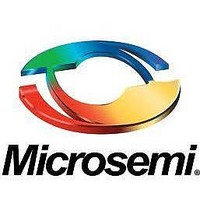LX1970-03 EVAL KIT Microsemi Analog Mixed Signal Group, LX1970-03 EVAL KIT Datasheet - Page 3

LX1970-03 EVAL KIT
Manufacturer Part Number
LX1970-03 EVAL KIT
Description
KIT EVAL FOR VISIBLE LT SENSOR
Manufacturer
Microsemi Analog Mixed Signal Group
Datasheet
1.LX1970-03_EVAL_KIT.pdf
(6 pages)
Specifications of LX1970-03 EVAL KIT
Lead Free Status / RoHS Status
Lead free / RoHS Compliant
Other names
LX1970-03 EVALKIT
LX1970 E
O
The LX1970 is a new technology light sensor
with spectral response that emulates the human
eye. This device is ideal for monitoring ambient
light for brightness control systems in flat panel
displays.
arrangement (patents pending) with a peak
response at 520nm while sharply attenuating
both ultra violet and infrared wavelengths
without the use of an optical filter. The photo
sensor is a pin diode array with an accurate,
linear, and very repeatable current transfer
function.
The evaluation board ships with an aperture
wheel that allows the user to approximate the
sensor’s mounting inside an assembly with a
entrance hole for light. The aperture wheel can
rotate to program various holes sizes. Three
small rheostats and four input connection
terminals permit the sensor’s output gain
(current to voltage conversion) and dimming
transfer function to be adjusted to the user’s
ambient light conditions, and output voltage
requirements.
capability of the sensor the evaluation board can
be configured (by setting J1 to the LED Driver
position, and J4 to the Driver position) to power
two white LED’s by a Microsemi LX1990 LED
sink driver controller (included) when 3 to 5V is
connected across VDD and GND terminals.
Evaluation Board Features
E
The evaluation board has five possible inputs of
which at least two must be used to operate the
circuit. In the simplest configuration connect 2V
to 5V across VDD and GND. With this power
connected and all jumpers in their open position
(see evaluation board schematic figure 2) the
Copyright © 2002
Rev. 1.1a 1/27/05
For a quick demonstration of the dimming
VALUATION
VERVIEW
•
•
•
•
Aperture wheel allows simulation of
sensor mounting inside a case
Included rheostats allows easy output
voltage gain conversion for light level
Additional jumpers enable isolation, and
pull-down diodes for some configurations
Included LX1990 Sink LED Driver and two
Microsemi white LED’s demonstrate the
sensors utility and ease of use
B
VALUATION
It has a unique photo diode
OARD
O
PERATION
B
11861 Western Avenue, Garden Grove, CA. 92841, 714-898-8121, Fax: 714-893-2570
OARD
Integrated Products
Microsemi
LX1970 by itself can be evaluated. The SRC
and SNK outputs will act as a current source
and sink respectively and change with the
intensity of light. The output compliance range
will of course depend on the input voltage and
output current (see LX1970 datasheet for
details).
used directly, then the SRC and SNK terminals
can be used to hook up external circuitry to the
sensor.
conversion of the output currents to a scalable
voltage output, then J2 and/or J4 should be
used.
position connects the SRC output to external
resistors. When jumper J4 is connected in the
SNK PULL-UP position then the SNK output
current can be pulled up to VDD or some lower
external voltage.
position inserts an isolation diode in series with
the divider string for applications where the
sensor may be disengaged for full manual
override.
sensors is interrupted, or the SRC diode pull-
down terminal is set low shunting the sensors
output current.
The SRC ADJUST PULL-UP terminal allows an
external DC voltage or PWM signal to connect to
the high side of the voltage divider R1+R2 and
R4+R5.
adjustment of the divider; they are set to their
maximum (100KΩ) when set fully clockwise.
The SRC FIXED PULL-UP terminal provides a
second input for a DC voltage or PWM signal for
more complex signal conditioning circuits. The
terminal labeled SRC DIODE PULL-DOWN can
be used as described above to shunt the
sensors current; this too could be a DC voltage
or PWM signal.
On the SNK side the evaluation board includes
one 100KΩ rheostat, R6 that can be connected
to VDD to generate a signal inverted from the
SRC output side. On both the SRC and SNK
output a 1uf capacitor (C1 & C3) is placed in
parallel with the output resistors. The capacitors
slow down the response time of the sensor so it
won’t try to track the 50-60Hz lighting. All
evaluation board input connections; jumpers and
test points are summarized in table 1-3 on the
following page. See LX1970 datasheet for
application schematics and suggestions.
If the light sensors current outputs are to be
Jumper J2 when set to the DIVIDER
If however the application requires
Rheostats R1 and R4 allow easy
This could be true if power to the
Jumper J3 when in the D2 IN
U
SER
G
UIDE
Page 3

















